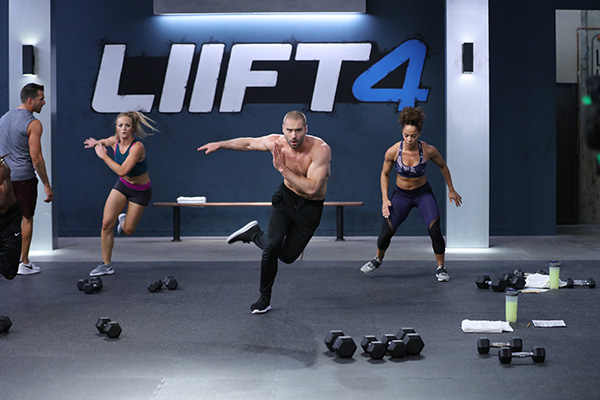What’s More Effective: HIIT or Steady-State Cardio?

HIIT vs. LISS sounds like an upcoming Marvel summer blockbuster, but it’s actually one of the more interesting — and still-evolving — fitness debates in recent years. It hinges on the eternal question/sigh: “How much cardio do I really need to do?”
HIIT (high-intensity interval training) and LISS (low-intensity steady state) are cardio workouts that offer seemingly conflicting answers to that question.
At one point, cardio guidelines were simple: Do 150 minutes of blood-pumping exercise a week for general health. If you want to lose weight, do more. The HIIT vs. LISS smackdown arose from researchers’ attempts to get more high-tech.
In a HIIT workout, you alternate bursts of intense exercise (80 to 95 percent of your maximum heart rate) with brief recovery periods.
A LISS cardio workout might involve jogging on a treadmill or swimming laps at a steady speed, topping out at 60 percent of your maximum heart rate for at least 30 minutes.
HIIT struck it big in the mid-2010s, with a surge of studies that contended it was superior to LISS for calorie burn, weight loss, and cardiovascular health.
To a time-crunched world, the suggestion was irresistible: The same (or better) results in half the time? Could it possibly be too good to be true? Let’s review the research.
What Is an “Effective” Workout?

First, let’s define what makes a workout “effective,” something that’s as dependent on goals as it is on workout type.
You might want to tone up a bit, or you might want to lose 20 pounds. You might want to get shredded. Or you might just want to stay in good cardiovascular health and chase the mood boost that cardio provides (for some of us, anyway).
“There are so many things that dictate what is the most efficient or effective exercise, including fitness level and experience,” says Trevor Thieme, C.S.C.S. “The most appropriate workout and training strategy for you really depends on your goals.”
For the purposes of HIIT vs. LISS cardio, the factors most often evaluated are: weight loss, fat loss, aerobic capacity (VO2 max), and time-efficiency.
HIIT vs. LISS: Pros and Cons

The internet is noisy with arguments on both sides of the HIIT/LISS debate, but here’s the latest consensus.
Fat loss (advantage: HIIT)
A review published in the British Journal of Sports Medicine compared the effects of HIIT and moderate-intensity continuous training (MOD) on body fat, analyzing 36 studies involving more than a thousand people.
While researchers didn’t find differences in the percentage of body fat burned between those in the HIIT and MOD groups, they did find “a superiority of interval training in the reduction of absolute total fat mass.”
Weight loss (draw)
Studies comparing high- and moderate-intensity training uncover little difference in weight and body mass index (BMI) results between the two.
But if you’re laser-focused on the scale, you may be missing the forest in favor of the trees; body composition is a better gauge of your workout’s effectiveness.
So if HIIT delivers greater fat loss at the same weight, something must be accounting for the vacated mass…
Muscle gain (advantage: HIIT)
Exercises performed at high intensity necessarily place greater stress on skeletal muscle.
But add resistance training to HIIT — be it through free weights or bodyweight exercises — and you can trigger some truly meaningful muscle growth while simultaneously building endurance.
Cardiovascular function (advantage: HIIT)
Perhaps the most reliable measurement of fitness is VO2 max, which represents the cardiorespiratory system’s ability to take in oxygen and deliver it to muscles.
A 2014 study found that both high- and moderate-intensity exercise improved participants’ levels of cardiorespiratory fitness, but HIIT did so by a factor of more than two.
Accessibility (advantage: LISS)
There’s no question that low-intensity, steady-state cardio is the more accessible of the two protocols.
If you’re a beginner, have a lot of weight to lose, or simply haven’t worked out in a while, you might have to start with LISS before advancing to HIIT, which may prove too challenging.
“Once you become moderately fit,” however, “you’ll have to look to higher intensity training methods such HIIT to continue your transformation,” says Thieme.
What’s the Metabolic Difference Between HIIT and LISS?
The biggest difference for your results between HIIT and LISS comes down to their effects on the body’s energy systems.
Research has found that HIIT workouts increase your excess post-exercise oxygen consumption, also known as EPOC or more simply the “afterburn effect.” The premise is that it takes your body longer to recover after a more intense workout.
The longer it takes your body to return to “normal,” the longer your metabolism will remain elevated and the more total calories you’ll burn.
HIIT vs. LISS: The Final Verdict

When it comes to results, HIIT has an upper hand — with a catch. “When you’re talking weight loss, muscular endurance, and stamina, HIIT has the advantage,” says Thieme. “Evidence shows there’s a greater and longer-lasting metabolic effect from HIIT than LISS.”
But HIIT is only appropriate for people who have already built a foundation of fitness. “If you’re just getting into exercise, HIIT could potentially do more harm than good by increasing your risk of overtraining,” says Thieme. “But once you build a solid fitness foundation, HIIT can potentially maximize your results and optimize your progress towards your cardio and weight loss goals in minimal time.”
